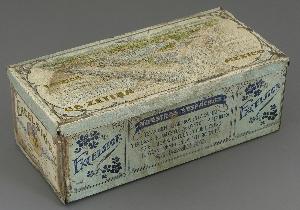Carlos B. Zetina Iturbe
Carlos B. Zetina Iturbe;Carlos B. Zetina
Place: Puebla
Born: 1900
Biography:
Carlos B. Zetina Iturbe, also known as Carlos B. Zetina, was a renowned Mexican architect and entrepreneur born in Puebla, Mexico in 1900. He is known for founding Carlos B. Zetina Architects, an architecture studio with a three-generation legacy, and for being the founder of Excelsior shoe factory. He was also the President of the National Olympic Committee of Mexico from 1923 to 1925.
The Architectural Vision
Zetina's architectural work is characterized by its focus on structural geometry and form exploration. His studio, Carlos B. Zetina Architects, has been a benchmark for innovative designs in Mexico. The company's legacy spans over three generations, with a commitment to delivering exceptional architectural services. As an entrepreneur, Zetina was also the founder of Excelsior shoe factory, which marked a significant milestone in his career. His involvement in the National Olympic Committee of Mexico further solidified his reputation as a dedicated and passionate individual.
Artistic Contributions
Although primarily known for his architectural prowess, Carlos B. Zetina Iturbe has also made significant contributions to the art world. His work can be found in various collections, including the Colección Andrés Blaisten, a Mexican art collection that features a diverse range of Latin American artworks. The Museo Soumaya, a private museum located in Mexico City, is another notable institution that showcases Zetina's work. The museum, founded by Mexican businessman Carlos Slim, houses over 66,000 works of art from 30 centuries, making it one of the most complete collections in its kind.
- Carlos Mérida, a Guatemalan artist, is also featured in the Colección Andrés Blaisten. His work is characterized by its focus on non-figurative and geometric styles.
- Federico Heraclio Cantú Garza, a Mexican painter, engraver, and sculptor, is another notable artist whose work can be found in the collection.
- Casimiro Castro, a Mexican painter and lithographer, is regarded as one of the leading graphic and landscape artists in nineteenth-century Mexico.
by these artists include paintings, sculptures, and prints from various periods and styles. The Colección Andrés Blaisten features works by Angel Zarraga, a Mexican painter, who is known for his mastery of oil painting and his ability to capture the essence of femininity in his works. In conclusion, Carlos B. Zetina Iturbe has left an indelible mark on the world of architecture and art. His legacy continues to inspire new generations of architects and artists, and his contributions to the Colección Andrés Blaisten and the Museo Soumaya remain a testament to his innovative spirit and artistic vision.

